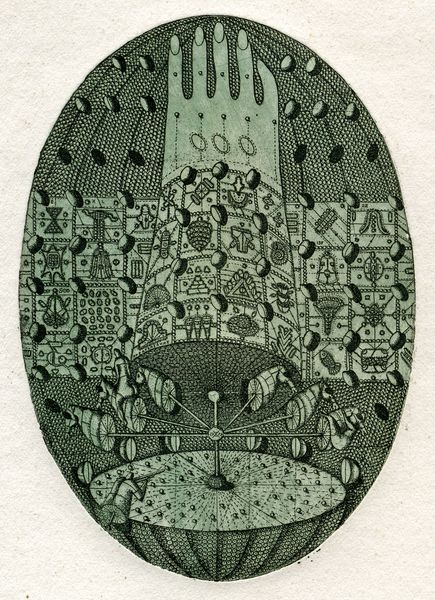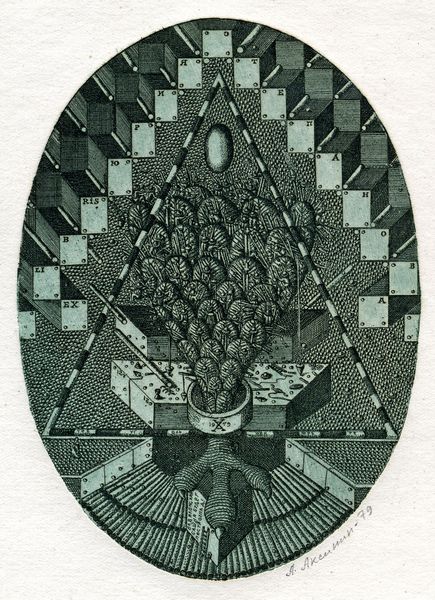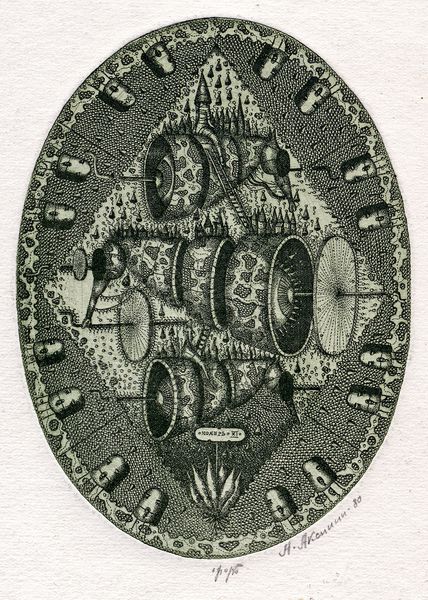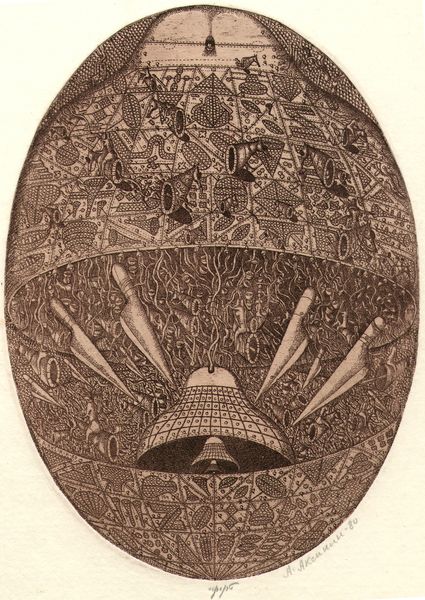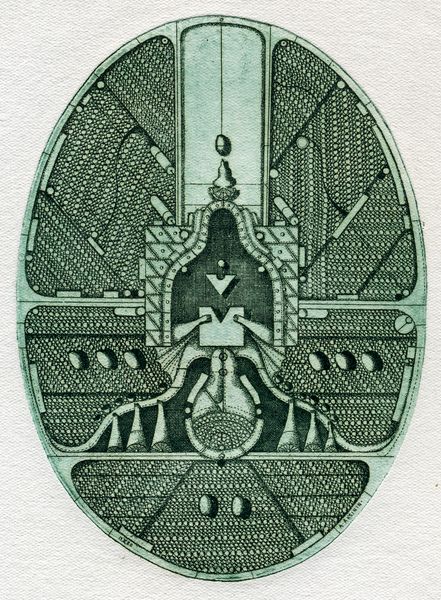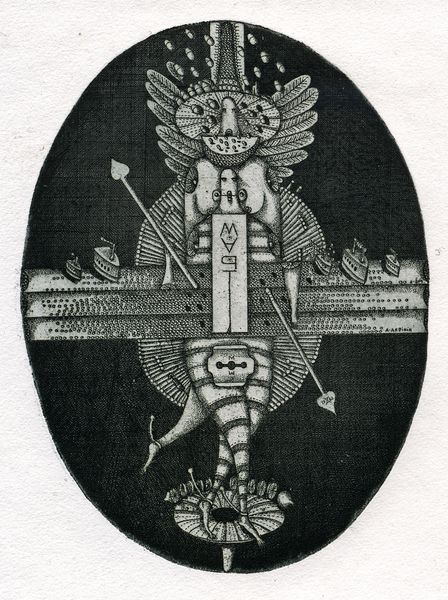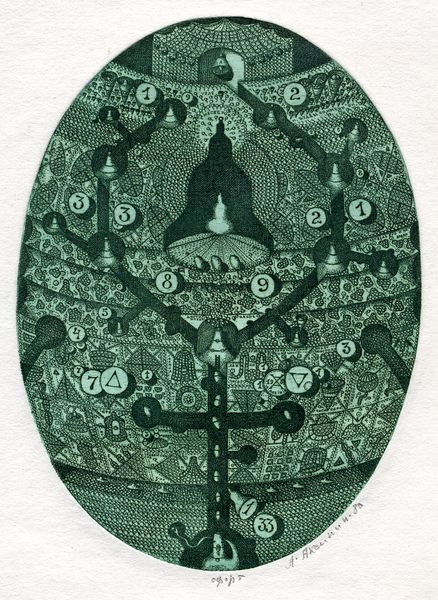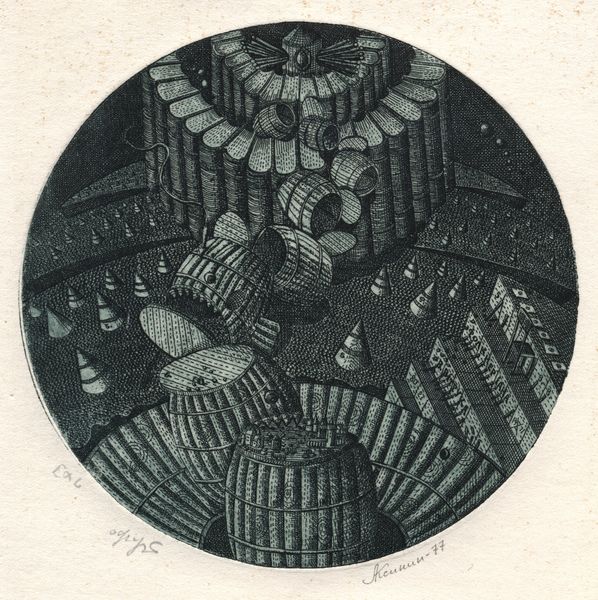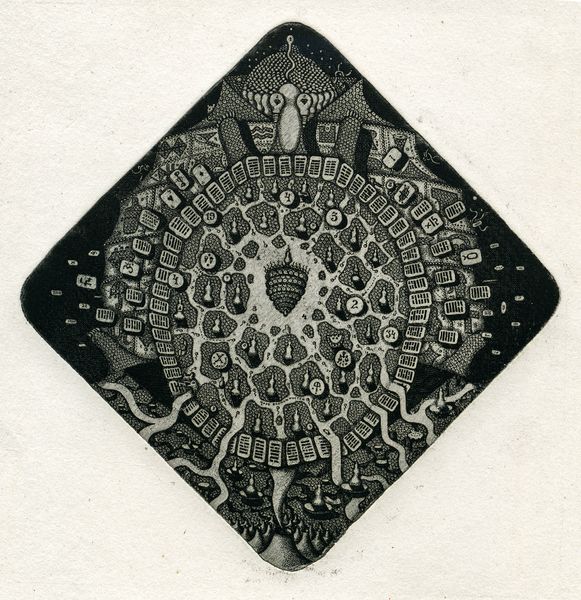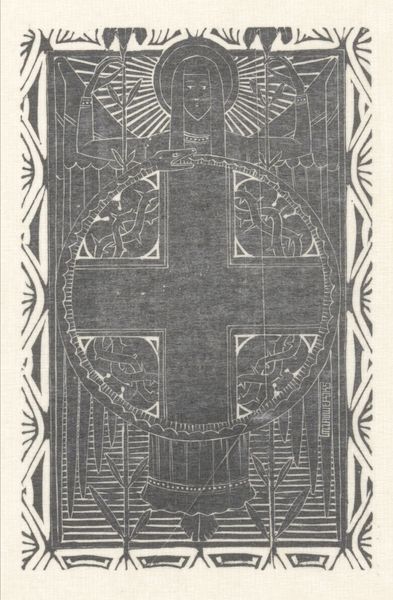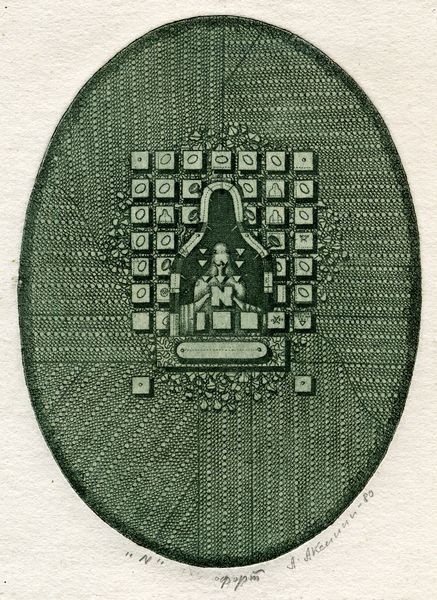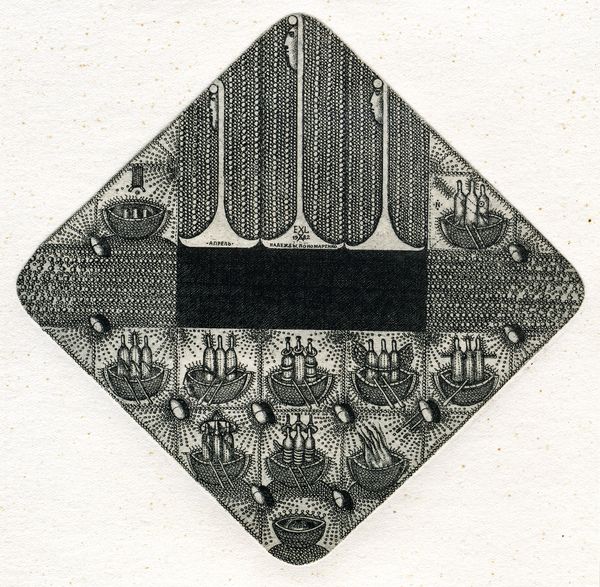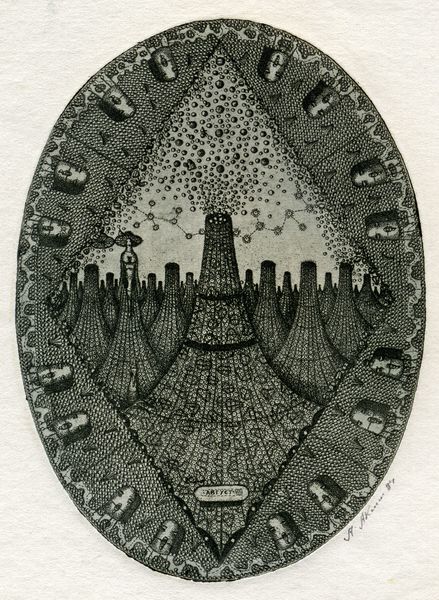
Copyright: Oleksandr Aksinin,Fair Use
Editor: This is Oleksandr Aksinin’s "Exlibris of Gelya Buryakovska" from 1979, a drawing executed with ink, using engraving techniques, and it definitely dives into graphic art territory. There is just so much to take in with this densely packed imagery. What do you see in this piece? Curator: Well, immediately, I see an intense layering of imagery that reflects the sociopolitical constraints on artistic expression during the Soviet era. Symbolism and fantasy often became coded languages, allowing artists to critique power structures without direct confrontation. It's an Ex Libris, of course, and therefore inherently tied to the world of books and ideas—were such ideas circulating freely at this time, do you think? Editor: That’s a really interesting point. I hadn’t thought about the subversive potential of symbolism in this context. Looking at all the little figures, the almost dream-like structure, it definitely feels like there's more going on beneath the surface. Were ex libris commonly used this way, as a means of subtle protest? Curator: It wasn't uncommon. The "bookplate" tradition, in general, became a powerful way to hint at certain values or affiliations without directly opposing the official culture. Aksinin and other Ukrainian artists of his generation had to navigate a really complex landscape. Do you see any particular symbols or motifs that strike you as potentially charged? Editor: I keep coming back to the layering effect; it's as if multiple realities are stacked on top of each other. And maybe the little figures, if we look closely, they might hint at figures in society, high and low. I definitely want to know more about Aksinin. Curator: Absolutely, understanding his biography and the broader artistic context of the Ukrainian avant-garde is crucial. It unveils the quiet rebellions embedded within works like this. Editor: This has totally shifted how I view this Ex Libris. I came in thinking it was just a whimsical illustration, now I realize it reflects a form of resistance. Curator: And that's the power of art: to encode history and resistance within its lines.
Comments
No comments
Be the first to comment and join the conversation on the ultimate creative platform.
